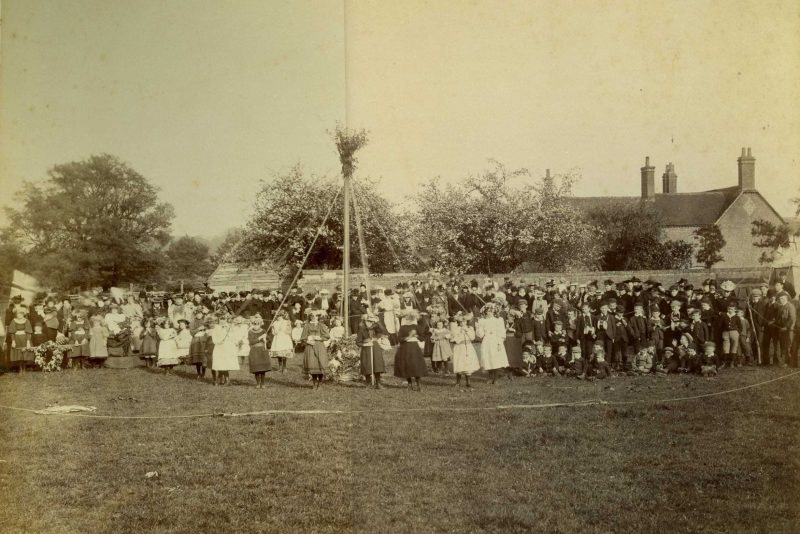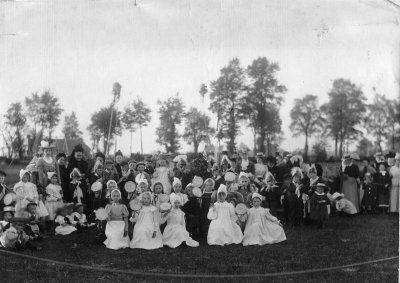On 12 April Tim Healey explained how pagans and puritans have shaped the celebration of May morning in Oxford. See Tim’s website, May Morning Oxford, for photos and details of recent events on 1 May in Oxford.
Magdalen College choir launches the day at 6 am by singing, from the top of the tower (or, in 2020, online), the Hymnus Eucharisticus. This was (until the current plague forbade it) followed by morris dancing in the streets, and then general shenanigans in the pubs and elsewhere. Historically, the hymn is relatively recent, the dancing is ancient, and the shenanigans go back thousands of years.
The custom of ‘bringing in the May’ (hawthorn blossom) has distant origins in the Celtic festival of Beltane and Roman celebrations of Flora, goddess of the spring. In 1250, the Chancellor of Oxford University forbade ‘… all dancing in masks or with disorderly noises, and all processions of men wearing wreaths and garlands made of leaves of trees or flowers or what not.’
Morris dancing was first documented in England at the Goldsmiths’ feast in 1448. By the 16th century, it was widespread in many villages. At Maytime, there was often a cheery complicity between the parish church authorities, the gentry, and the revellers. But the Puritans were horrified, and in 1589 had the constable of Banbury ‘take down all Maypoles … and repress and put down all Whitsun ales, May games and morris dances and utterly forbid any wakes or fairs …’ In 1648 the Oxford diarist Anthony Wood recorded ‘zealous persecuting of the young people that followed May-Games, by breaking of Garlands, taking away fiddles from Musicians, dispersing Morrice-Dancers, and by not suffering a green bough to be worn in a hat or stuck up at any door, esteeming it a superstition or rather an heathenish custom.’
Jollification returned with the restoration of the monarchy in 1660, and in 1695 Wood recorded that at Magdalen ‘the choral ministers … do, according to an ancient custom, salute Flora every year on the first of May, at four in the morning, with vocal music of several parts.’
In the 18th century, the performance still had a secular character: ‘a merry Concert of both Vocal and Instrumental Music … lasting almost 2 hours.’ Then, according to Dr Routh, President of Magdalen from 1791, one wet May morning the choir just sang the Hymnus Eucharisticus. It was mercifully short, and, being the college Grace, needed no rehearsal.
In Victorian times, a famous painting by Holman Hunt, and Henry Taunt’s photographs and postcards made May morning in Oxford widely known. From 1923 university, town, and (for a while) police morris ‘sides’ have danced in the streets, inviting the famous ‘sides’ from Headington, Abingdon and Bampton to join them, and afterwards enjoying a well-aled morris breakfast in St Edmund Hall. Sides often include a ‘Jack in the Green’, a dancer completely encased in foliage.
In the lively questions and comments after Tim Healey’s talk, Christine Wootton mentioned the vicar’s report of Radley’s May celebrations in 1895. Young Mark Villebois was Jack in the Green. ‘After silently enduring the heat for some time, he at last broke loose from his leafy dungeon, and saved his life.’

